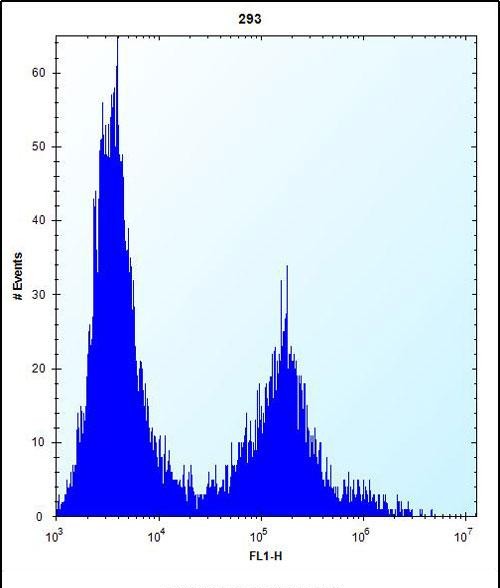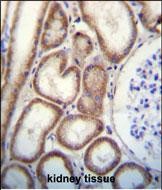


| WB | 1/1000 | Human,Mouse,Rat |
| IF | 咨询技术 | Human,Mouse,Rat |
| IHC | 1/100-1/500 | Human,Mouse,Rat |
| ICC | 技术咨询 | Human,Mouse,Rat |
| FCM | 1/10-1/50 | Human,Mouse,Rat |
| Elisa | 咨询技术 | Human,Mouse,Rat |
| Aliases | Tetranectin, TN, C-type lectin domain family 3 member B, Plasminogen kringle 4-binding protein, CLEC3B, TNA |
| Entrez GeneID | 7123 |
| WB Predicted band size | 22.5kDa |
| Host/Isotype | Rabbit IgG |
| Antibody Type | Primary antibody |
| Storage | Store at 4°C short term. Aliquot and store at -20°C long term. Avoid freeze/thaw cycles. |
| Species Reactivity | Human |
| Immunogen | This CLEC3B antibody is generated from rabbits immunized with a KLH conjugated synthetic peptide between 95-122 amino acids from the Central region of human CLEC3B. |
| Formulation | Purified antibody in PBS with 0.05% sodium azide,1%BSA and 50% glycerol.prepared by Saturated Ammonium Sulfate (SAS) . |
+ +
CLEC3B (C-type lectin domain family 3 member B), also known as tetranectin, is a secreted protein encoded by the CLEC3B gene. It belongs to the C-type lectin superfamily, characterized by a conserved carbohydrate-recognition domain (CRD) that binds calcium-dependent ligands. Structurally, CLEC3B forms homotrimers through its coiled-coil α-helical domain, facilitating interactions with extracellular components. Functionally, it binds plasminogen and regulates proteolytic processes involved in tissue remodeling, angiogenesis, and tumor suppression. CLEC3B is implicated in bone formation, neuronal development, and modulation of the fibrinolytic system.
CLEC3B antibodies are tools used to detect and quantify this protein in research and diagnostics. They are crucial for studying CLEC3B's role in diseases, particularly cancer. Reduced CLEC3B expression correlates with tumor progression in ovarian, breast, and colorectal cancers, suggesting its potential as a biomarker for metastasis or prognosis. Antibodies enable localization via immunohistochemistry (IHC), expression analysis via Western blot/ELISA, and functional studies in cell models.
Commercially available CLEC3B antibodies vary in specificity, targeting epitopes within its N-terminal domain or CRD. Validation includes testing in knockout models or siRNA-treated cells to confirm selectivity. Challenges include cross-reactivity due to conserved lectin domains. Recent studies explore CLEC3B's therapeutic potential, such as modulating its interaction with plasminogen to inhibit cancer cell invasion. Overall, CLEC3B antibodies remain vital for unraveling its biological significance and translational applications in oncology and regenerative medicine.
×